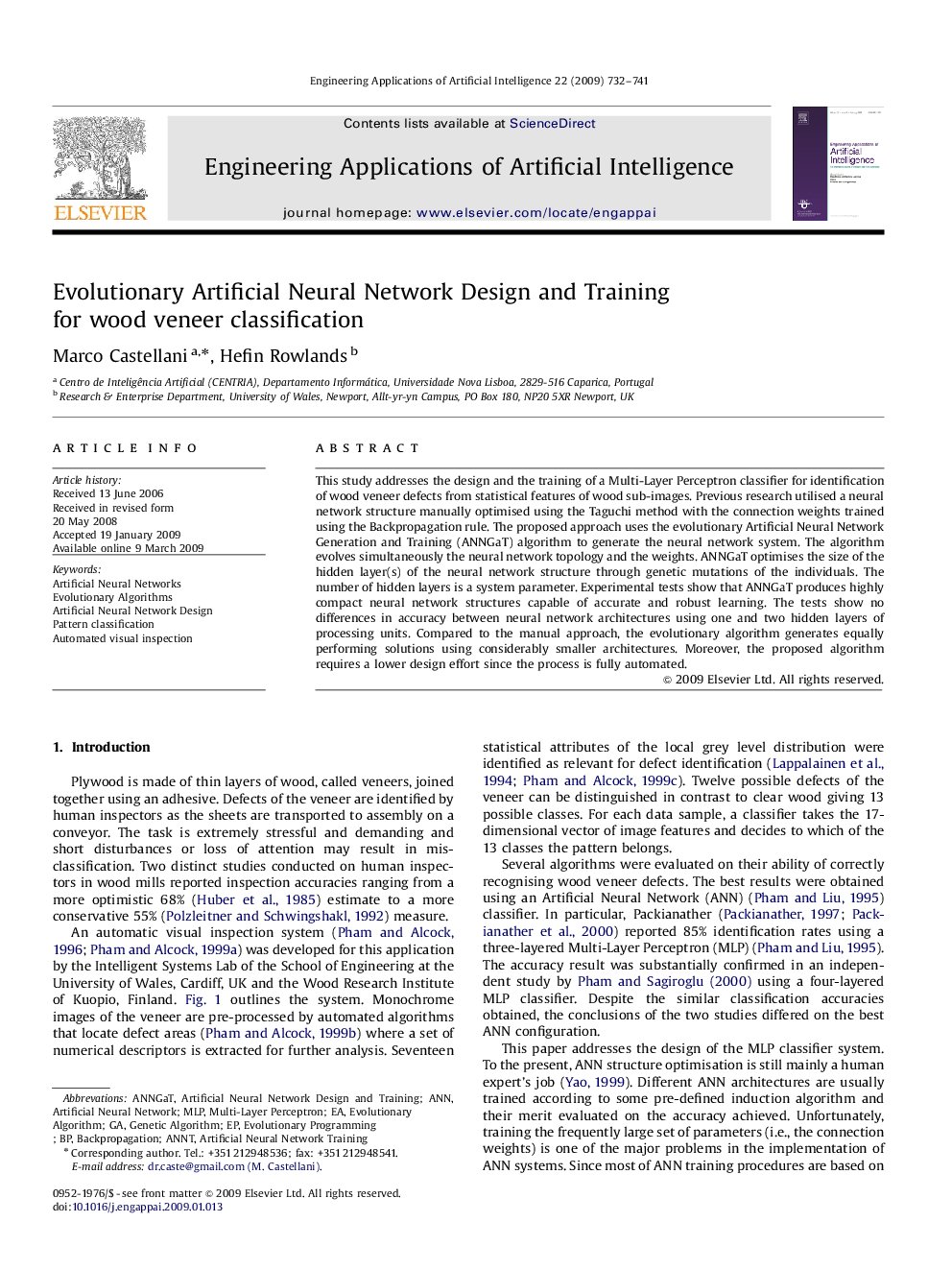| Article ID | Journal | Published Year | Pages | File Type |
|---|---|---|---|---|
| 381536 | Engineering Applications of Artificial Intelligence | 2009 | 10 Pages |
This study addresses the design and the training of a Multi-Layer Perceptron classifier for identification of wood veneer defects from statistical features of wood sub-images. Previous research utilised a neural network structure manually optimised using the Taguchi method with the connection weights trained using the Backpropagation rule. The proposed approach uses the evolutionary Artificial Neural Network Generation and Training (ANNGaT) algorithm to generate the neural network system. The algorithm evolves simultaneously the neural network topology and the weights. ANNGaT optimises the size of the hidden layer(s) of the neural network structure through genetic mutations of the individuals. The number of hidden layers is a system parameter. Experimental tests show that ANNGaT produces highly compact neural network structures capable of accurate and robust learning. The tests show no differences in accuracy between neural network architectures using one and two hidden layers of processing units. Compared to the manual approach, the evolutionary algorithm generates equally performing solutions using considerably smaller architectures. Moreover, the proposed algorithm requires a lower design effort since the process is fully automated.
